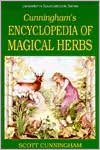Eating the Sun: How Plants Power the Planet
Search in google:
A story of a world in crisis and the importance of plants, the history of the earth, and the feuds and fantasies of warring sceientists this is not your fourth-grade science class's take on photosynthesis. From acclaimed science journalist Oliver Morton comes this fascinating, lively, profound look at photosynthesis, nature's greates miracle. Whereever there is greenery, photosynthesis is working to make oxygen, release energy, and create living matter from the raw material of sunlight, water, and carbon dioxide. Without photosynthesis, there would be an empty world, an empty sky, and a sun that does nothing more than warm the rocks and reflect off the sea. With photosynthesis, we have a living world with three billion years of sunlight-fed history to relish. Eating the Sun is a bottom-up account of our planet, a celebration of how the smallest things, enzymes and pigments, influence the largest things the oceans, the rain forests, and the fosil duel economy. From the physics, chemistry, and cellular biology that make photosynthesis possible, to the quirky and competitive scientists who first discovered the beautifully honed mechanisms of photosynthesis, to the modern energy crisis we face today, Oliver Morton offers a complete biology of the earth through the lens of this mundane and most important of processes. More than this, Eating the Sun is a call to arms. Only by understanding photosynthesis and the flows of energy it causes can we hope to understand the depth and subtlely of the current crisis in the planet's climate. What's more, nature's greatest energy technology may yet inspire the breakthroughs we need to flourish without each climatic chaos in the century to come. Entertaining, thought-provoking, and deeply illuminating, Eating the Sun reveals the photosynthesis is not only the key to humanity's history; it is also vital to confronting and understanding contemporary realities like climate change and the global food shortage. This book will give you a new and perhaps troubling way of seeing the world, but it also explains how we can change our situation for the better or the worse. Publishers Weekly The cycle of photosynthesis is the cycle of life, says science journalist Morton (Mapping Mars). Green leaves trap sunlight and use it to absorb carbon dioxide from the air and emit life-giving oxygen in its place. Indeed, plants likely created Earth's life-friendly oxygen- and nitrogen-rich biosphere. In the first part, Morton, chief news and features editor of the leading science journal, Nature, traces scientists' quest to understand how photosynthesis works at the molecular level. In part two, Morton addresses evidence of how plants may have kick-started the complex life cycle on Earth. The book's final part considers photosynthesis in relation to global warming, for, he says, the Earth's plant-based balance of carbon dioxide and oxygen is broken: in burning vast amounts of fossil fuels, we are emitting more carbon dioxide than the plants can absorb. But Morton also explores the possibility that our understanding of photosynthesis might be harnessed to regain that balance. Readers should persevere through (or skim) the more technical discussions in the first part, for what follows is a vast, elegant synthesis of biology, physics and environmental science that can inform our discussions of urgent issues. (Nov. 4)Copyright © Reed Business Information, a division of Reed Elsevier Inc. All rights reserved.
List of illustrationsPt. 1 In the span of a man's lifeCh. 1 Carbon 3Ch. 2 Energy 49Ch. 3 Light 93Pt. 2 In the span of a planet's lifeCh. 4 Beginnings 145Ch. 5 Fossils 193Ch. 6 Forests and Feedback 229Ch. 7 Grass 269Pt. 3 In the span of a tree's lifeCh. 8 Humanity 317Ch. 9 Energy 373Glossary 413Bibliography 420Further Reading 436Acknowledgements 443Index 446








